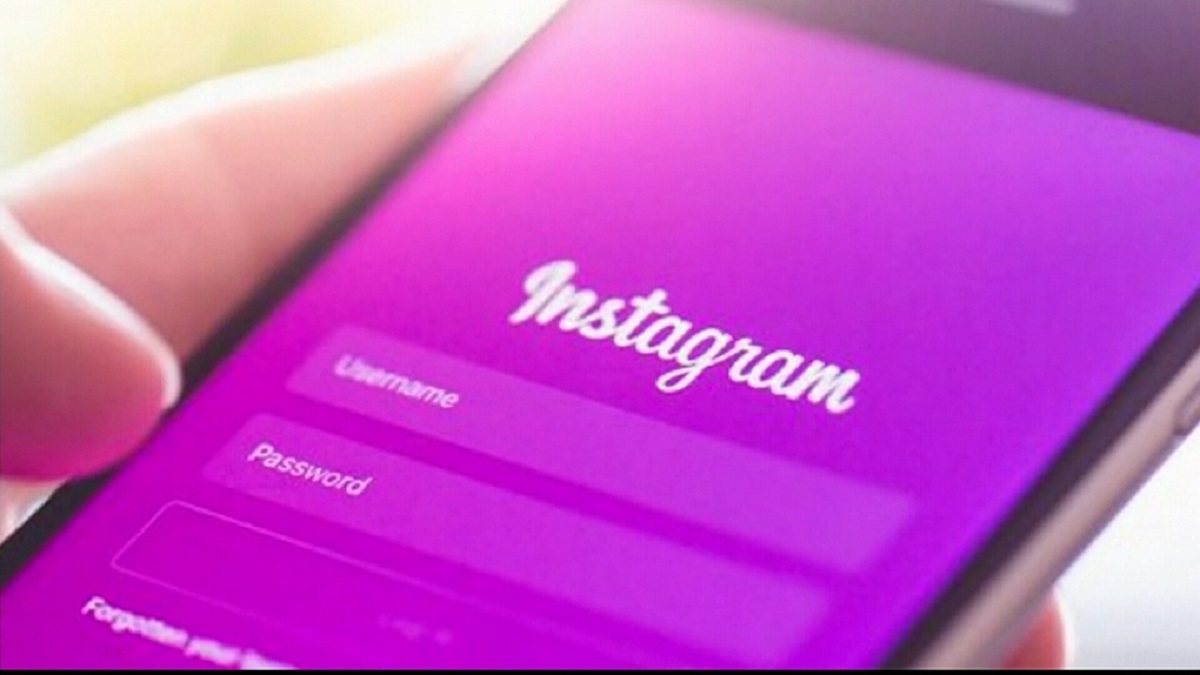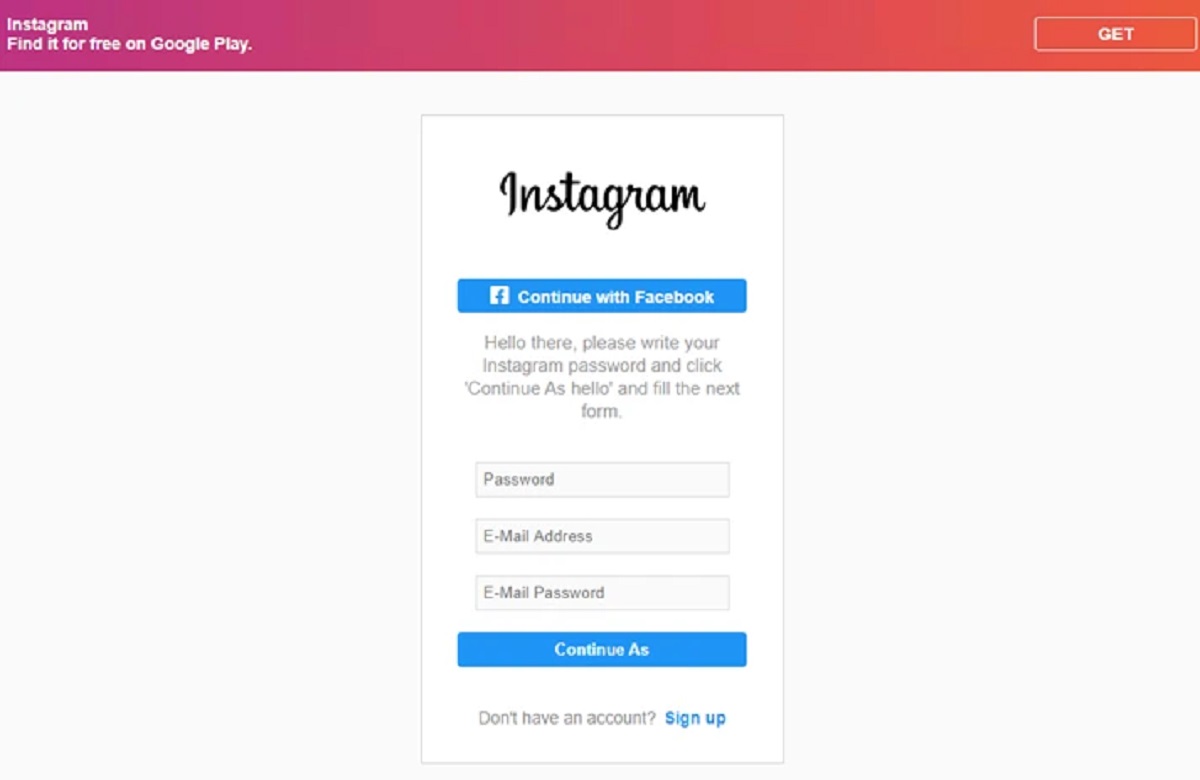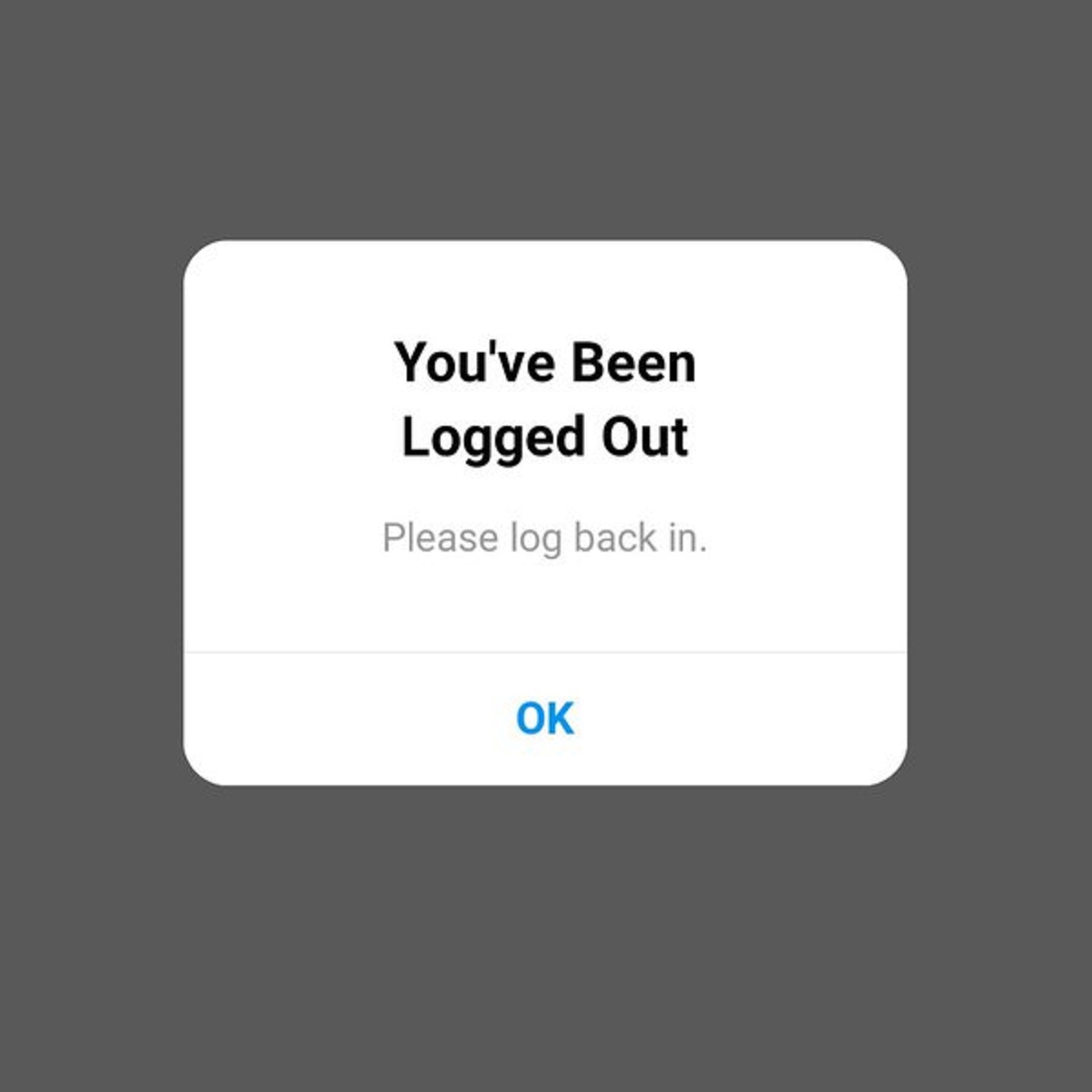Introduction
With the popularity of Instagram skyrocketing in recent years, it’s no surprise that some individuals may be tempted to hack into Instagram accounts. Whether it’s to gain unauthorized access to someone’s profile or to retrieve valuable information, the motivations behind hacking Instagram accounts are diverse. However, it’s important to understand that hacking into Instagram accounts is illegal and unethical. This article aims to shed light on the risks, consequences, and methods used in Instagram hacking.
Instagram, as a widely used social media platform, takes the privacy and security of its users seriously. It employs various measures to protect user accounts from unauthorized access. Engaging in hacking activities on Instagram not only violates the platform’s terms of service, but it can also result in severe consequences, including legal actions such as fines or even imprisonment.
Whether you’re interested in hacking an Instagram account out of curiosity or for more malicious reasons, it’s crucial to understand the potential repercussions. The purpose of this article is to inform and educate readers about the various methods used in Instagram hacking. Please note that this information is provided for educational purposes only, and any attempt to hack an Instagram account is strictly discouraged.
Without further ado, let’s delve into the different methods commonly employed by hackers to gain unauthorized access to Instagram accounts. By exploring these techniques, we can better understand the vulnerabilities that users should be aware of in order to enhance their own account security.
Understanding the Risks and Consequences
Before attempting to hack an Instagram account, it’s important to fully comprehend the risks and potential consequences involved. Hacking is illegal and can have severe repercussions, both legally and ethically. By engaging in these activities, you not only violate the privacy and trust of others, but you also expose yourself to legal actions.
First and foremost, hacking into someone’s Instagram account without their consent is a violation of their privacy rights. It’s important to respect the boundaries and trust of others, rather than taking advantage of their personal information for malicious purposes. Remember, treating others with respect and engaging in ethical behavior is fundamental in the online world.
From a legal standpoint, hacking into Instagram accounts is a criminal offense. Laws regarding hacking and unauthorized access vary from country to country, but most jurisdictions have strict penalties in place for such activities. If caught, you could face criminal charges, hefty fines, and potentially even imprisonment. It’s simply not worth risking your freedom and future for the sake of hacking into someone’s Instagram account.
Furthermore, hacking into Instagram accounts tarnishes your own reputation. If you engage in hacking and malicious activities, word may spread, and your credibility and trustworthiness could be permanently damaged. It’s essential to consider the long-term consequences of your actions and strive to build a positive online presence instead.
Lastly, hacking can also have unintended consequences on the victim. By gaining unauthorized access to their Instagram account, you could potentially expose personal information, confidential messages, and sensitive photos to the public or other malicious individuals. This invasion of privacy can cause significant emotional distress and harm to the victim.
Overall, it’s crucial to recognize the ethical and legal ramifications of hacking into Instagram accounts. It’s far more advisable to focus on positive activities, such as protecting your own account and promoting a safe and respectful online environment for everyone.
Common Methods Used in Instagram Hacking
There are several methods that hackers commonly employ to gain unauthorized access to Instagram accounts. While it’s important to note that these methods are illegal and unethical, understanding them can help users better safeguard their accounts and be aware of potential vulnerabilities. Here are some of the most common methods used in Instagram hacking:
- Brute-Force Attacks: This method involves systematically trying every possible combination of passwords until the correct one is found. Hackers use software tools that automate this process, making it easier to crack weak or common passwords. It’s crucial to use strong and unique passwords to mitigate the risk of brute-force attacks.
- Exploiting Vulnerabilities: Hackers are constantly searching for weaknesses in Instagram’s security system. Once a vulnerability is identified, they exploit it to gain unauthorized access to accounts. Instagram regularly releases updates and patches to address these vulnerabilities, so it’s important to keep the app up to date to protect against potential exploits.
- Phishing Techniques: Phishing involves creating deceptive websites or emails that mimic legitimate Instagram login pages. When unsuspecting users input their login credentials, hackers capture this information and gain access to their accounts. It’s essential to always validate the authenticity of login pages and be wary of suspicious emails or links.
- Social Engineering: This method involves manipulating individuals to disclose their login credentials. Hackers may impersonate someone the target knows and trust, such as a friend or family member, and convince them to share their password or other sensitive information. Remaining cautious and verifying the identity of individuals requesting login details can help prevent falling victim to social engineering attacks.
- Keyloggers: Keyloggers are software or hardware devices that record every keystroke made on a computer or mobile device. Hackers utilize keyloggers to capture Instagram login credentials and gain unauthorized access to accounts. Regularly updating antivirus software and being cautious while using public computers can help mitigate the risk of keyloggers.
- Password Recycling: Many users have the habit of using the same password across multiple platforms. Hackers exploit this by gaining access to one compromised account and attempting to use the same credentials on other platforms, including Instagram. Using unique and strong passwords for every online account is essential to prevent password recycling attacks.
While it might be tempting to delve into the world of hacking, it’s important to remember that these activities are both illegal and unethical. Understanding the methods used by hackers can help users protect their accounts and promote a safer online environment for everyone.
Utilizing Brute-Force Methods
One common method employed by hackers to gain unauthorized access to Instagram accounts is brute-force attacks. Brute-force attacks involve systematically trying every possible combination of passwords until the correct one is found. While time-consuming, this method can be effective against weak or commonly used passwords.
To execute a brute-force attack, hackers utilize software tools that automate the process of trying different passwords. These tools systematically try various combinations, including common passwords, dictionary words, and character variations, until they find the correct password.
It’s important to note that brute-force attacks are more successful against weak passwords that lack complexity. Passwords such as “123456” or “password” are easily guessed and are typically the first ones attempted by hackers. To protect against brute-force attacks, it’s essential to use strong, unique passwords that combine uppercase and lowercase letters, numbers, and special characters.
Instagram recognizes the risk of brute-force attacks and has implemented security measures to prevent them. For instance, the platform imposes rate-limiting restrictions, which means that after a certain number of incorrect password attempts, the account is temporarily locked. Additionally, Instagram can detect and block suspicious login attempts based on factors such as location or unusual activity patterns.
As a user, there are steps you can take to protect yourself against brute-force attacks. First and foremost, create a strong and unique password that is not easily guessable. Avoid using personal information, such as names, birthdays, or anniversaries, as part of your password. Instead, consider using a combination of unrelated words or phrases, numbers, and special characters that are easy for you to remember but difficult for others to guess.
Furthermore, enable two-factor authentication (2FA) on your Instagram account. Two-factor authentication adds an extra layer of security by requiring a secondary verification code, typically sent to your mobile device, in addition to your password. This makes it significantly more challenging for hackers to gain access to your account, even if they manage to guess your password.
By utilizing strong, unique passwords and enabling two-factor authentication, you can significantly reduce the risk of falling victim to brute-force attacks on Instagram. Taking these steps will help protect your account and ensure your online presence remains secure.
Exploiting Vulnerabilities in Instagram’s Security System
Another method frequently used by hackers to gain unauthorized access to Instagram accounts is by exploiting vulnerabilities in the platform’s security system. Instagram, like any other online platform, is not immune to potential weaknesses, and hackers are constantly on the lookout for such opportunities.
Vulnerabilities can arise from various factors, including flaws in the platform’s code, misconfigurations, or outdated software. Hackers exploit these vulnerabilities by discovering and taking advantage of weaknesses that allow them to bypass security measures and gain unauthorized access to accounts.
To combat such vulnerabilities, Instagram employs a dedicated team of security experts who continuously monitor and address any potential weaknesses or bugs in the system. The platform regularly releases updates and patches to fix vulnerabilities that have been identified, thereby enhancing the security of user accounts.
However, it is crucial for users to do their part in protecting themselves from potential vulnerabilities. One important step is to keep the Instagram app and all associated devices up to date. This ensures that the latest security patches are installed, minimizing the risk of exploits targeting known vulnerabilities.
Additionally, users should exercise caution when interacting with external links or third-party applications that claim to enhance their Instagram experience. These links or apps may contain malicious code that can exploit vulnerabilities in Instagram’s security system. It is important to only engage with trusted sources and refrain from clicking on suspicious or unverified links.
Furthermore, it is advisable to enable login alerts on Instagram. This feature notifies users via email or text message whenever someone tries to log into their account from a new or unfamiliar device or location. By staying vigilant and promptly reporting any unauthorized login attempts, users can take proactive steps to protect their accounts from potential exploitation.
Lastly, practicing good cybersecurity habits, such as regularly updating passwords and using unique, strong passwords for every online account, can help protect against vulnerabilities in Instagram’s security system. By following these best practices, users can significantly reduce the risk of falling victim to exploits that target weaknesses in the platform’s defenses.
It is important to remember that even with Instagram’s robust security measures in place, no system is completely foolproof. Remaining vigilant, staying informed about potential vulnerabilities, and implementing appropriate security measures will significantly enhance the protection of your Instagram account.
Phishing Techniques: Fooling the Target
Phishing techniques are commonly used by hackers to gain unauthorized access to Instagram accounts by tricking users into revealing their login credentials unknowingly. Phishing attacks typically involve creating deceptive websites or emails that mimic legitimate Instagram login pages, fooling users into entering their usernames and passwords.
The goal of phishing attacks is to exploit the trust and familiarity users have with Instagram’s login process. Hackers create fake login pages that closely resemble the genuine Instagram login page, complete with the same branding and design elements. These pages are often hosted on domains that are similar to the official Instagram website, making it easy for unsuspecting users to be deceived.
To carry out a phishing attack, hackers distribute phishing links through various channels, including emails, social media messages, or even SMS. These messages are designed to appear urgent or enticing, enticing users to click on the provided link. Once users land on the fake login page, they are prompted to enter their credentials, which are then captured by the hackers.
To protect against phishing attacks, it is crucial to remain cautious and vigilant when receiving unexpected or suspicious messages. Here are some tips to avoid falling victim to phishing attempts:
- Verify the legitimacy of the communication: Double-check the sender’s email address or social media profile to ensure it matches the official Instagram account or a trusted source.
- Do not click on suspicious links: Hover over links to view their destination before clicking on them. Be cautious of shortened or unfamiliar URLs.
- Check for secure connections: Ensure the website you are accessing has a valid SSL certificate (https://) indicating a secure connection.
- Be wary of urgent or alarming requests: Phishing messages often create a sense of urgency, such as warning about account closure or the need to verify information immediately. Take a step back and critically evaluate the situation before providing any personal information.
- Enable two-factor authentication (2FA): 2FA adds an extra layer of security by requiring a secondary verification code in addition to your password. Even if you fall victim to a phishing attack, the hacker would still need the secondary code to access your account.
By remaining cautious and informed about phishing techniques, users can protect themselves from falling victim to these deceptive tactics. Remember, Instagram will never ask for your login credentials via email or direct message, so be skeptical of any such requests. Stay vigilant and report any suspected phishing attempts to Instagram to help protect yourself and others from becoming victims of online scams.
Using Social Engineering to Gain Access
Social engineering is a method employed by hackers to manipulate individuals into divulging their login credentials or sensitive information. Instead of relying on technical vulnerabilities, social engineering targets human psychology and exploits the trust and relationships between individuals.
When it comes to social engineering to gain access to Instagram accounts, hackers often impersonate someone the target knows and trusts, such as a friend, family member, or colleague. They may use various tactics to deceive the target and convince them to share their login details or other sensitive information.
One common social engineering technique is pretexting, where the hacker fabricates a scenario or story to gain the target’s trust. They may pose as a customer support representative, claiming that there is an issue with the target’s account and requesting their login credentials for verification purposes.
Another social engineering tactic is called phishing through direct communication. In this method, the hacker directly contacts the target, usually through email, messaging apps, or phone calls, and pretends to be an official representative of Instagram. They will prompt the target to share their login credentials by claiming that their account has been compromised or that they need to update their security information.
To protect against social engineering attacks, it’s important to be cautious and skeptical of any unusual or unexpected requests for personal information. Here are some tips to help prevent falling victim to social engineering:
- Verify the identity of the person making the request: If someone contacts you claiming to be an Instagram representative, request additional verification or contact Instagram directly to confirm their identity.
- Do not share sensitive information without proper validation: Avoid divulging personal information, such as passwords or security questions, over the phone or through email unless you are certain of the legitimacy of the request.
- Be cautious of urgent or alarming requests: Social engineering tactics often rely on creating a sense of urgency to manipulate targets into acting without thinking. Take a step back, evaluate the situation, and remain vigilant.
- Double-check before clicking on any links: Verify the authenticity of links sent to you, even if they come from someone you know. Hover over the link to view the URL before clicking on it.
- Stay informed and educate yourself: Keep up with the latest social engineering techniques and familiarize yourself with the warning signs. This knowledge will help you recognize and avoid potential threats.
By being attentive, skeptical, and proactive, you can protect yourself against social engineering attacks. Remember, it’s always better to err on the side of caution and verify the legitimacy of any requests for personal information before sharing it.
Utilizing Keyloggers: Capturing Passwords
Keyloggers are tools frequently used by hackers to capture passwords and gain unauthorized access to Instagram accounts. These software or hardware devices record every keystroke made on a computer or mobile device, allowing hackers to track and retrieve sensitive information, including login credentials.
Keyloggers can be installed through various means. In some cases, hackers may physically install a hardware keylogger on the target’s computer or device, intercepting keystrokes as they are entered. Additionally, keyloggers can also be disguised as malicious software or hidden within seemingly harmless applications or links, which, when clicked or installed, surreptitiously record every keystroke made by the user.
Once installed, the keylogger captures all keystrokes, including usernames and passwords entered on the affected device. This data is then sent back to the hacker, who can use the captured information to gain unauthorized access to the victim’s Instagram account.
Protecting against keylogger attacks requires a multi-pronged approach. Here are some steps you can take to minimize the risk of falling victim:
- Keep your devices secure: Ensure that your computer, smartphone, and other devices are protected by strong passwords, PINs, or biometric authentication methods to prevent physical tampering and unauthorized access.
- Use reputable security software: Install and regularly update reputable antivirus or antimalware software on your devices. These programs can help detect and mitigate keylogger threats.
- Be selective with downloads and links: Avoid clicking on suspicious links or downloading software or files from untrusted sources. Always verify the integrity and authenticity of applications and downloads before installing them.
- Stay vigilant with email attachments: Avoid opening email attachments from unknown sources, as they could contain keylogger malware or other malicious payloads.
- Use a virtual keyboard for entering passwords: Some security software offers a virtual keyboard that allows you to enter passwords by clicking on icons instead of typing them. This can help thwart keyloggers by preventing them from capturing keystrokes.
By implementing these precautions, you can significantly reduce the risk of falling victim to keylogger attacks. It’s important to remember that maintaining good cybersecurity hygiene, such as regularly updating your devices and being cautious with online activities, is key to protecting yourself from keyloggers and other cyber threats.
Password Recycling: Exploiting User Habits
Password recycling is a dangerous habit that hackers often exploit to gain unauthorized access to Instagram accounts. Many users have the tendency to reuse passwords across multiple online platforms and services, making it easier for hackers to compromise their accounts.
When users reuse passwords, they create a vulnerability that hackers can exploit. If a user’s password for one website or service is compromised, hackers will try using the same password to gain access to the user’s accounts on other platforms. This practice, known as password recycling, can have severe consequences.
Hackers take advantage of password recycling by employing two main methods:
- Database Breaches: When a website or service experiences a data breach and suffers from compromised user credentials, hackers gain access to a database with users’ login information, including usernames and passwords. Since many users reuse passwords, hackers try these stolen credentials on other popular platforms, such as Instagram, in hopes of gaining unauthorized access.
- Credential Stuffing Attacks: In credential stuffing attacks, hackers use automated programs to automatically enter stolen usernames and passwords across multiple platforms. These programs attempt login combinations at a rapid pace in the hope of success. Hackers count on users reusing their passwords, making it more likely for them to gain access to other accounts.
To protect against password recycling attacks, it is crucial to practice good password hygiene. Here are some tips:
- Create unique and strong passwords: Use a combination of upper and lowercase letters, numbers, and special characters when creating passwords. Avoid using easily guessable information, such as names, birthdays, or common phrases.
- Use a password manager: Password managers help generate and store complex, unique passwords for each online account. With a password manager, you only need to remember one master password, and the manager takes care of the rest.
- Enable two-factor authentication (2FA): 2FA adds an extra layer of security by requiring a secondary verification code, usually sent to your mobile device, in addition to your password. Even if your password is compromised, the additional code helps protect against unauthorized access.
- Regularly update passwords: Make it a habit to update your passwords regularly, especially for critical accounts like your Instagram account. Ideally, change your passwords every few months or if you suspect any potential compromise.
By adopting these password management practices, you can mitigate the risk of falling victim to password recycling attacks. Protecting your online accounts is crucial in maintaining your privacy, security, and peace of mind.
Conclusion
Hacking into Instagram accounts is not only illegal but also unethical. Engaging in hacking activities can have severe consequences, including legal actions, damage to personal reputation, and emotional distress for victims. It is essential to respect the privacy and trust of others in the online world and to promote a safe and respectful online environment.
Throughout this article, we have explored various methods used in Instagram hacking, including brute-force attacks, exploiting vulnerabilities in the platform’s security system, phishing techniques, social engineering, keyloggers, and password recycling. However, it is crucial to note that the purpose of discussing these methods is to raise awareness and educate users about potential risks and vulnerabilities.
To protect your Instagram account and enhance your online security, there are important steps you can take:
- Use strong, unique passwords for each online account and regularly update them.
- Enable two-factor authentication (2FA) to add an extra layer of security.
- Stay vigilant and be cautious of suspicious emails, links, or requests for personal information.
- Keep your devices and software up to date to minimize vulnerabilities.
- Practice good password hygiene and avoid password recycling.
Remember, the responsibility for maintaining the security of your Instagram account lies with each individual user. By adopting these best practices and being informed about potential hacking methods, you can protect yourself, your privacy, and your online presence in an increasingly interconnected world.
It is our collective responsibility to foster a safe and secure environment on Instagram and other online platforms. By respecting the privacy of others, practicing good cybersecurity habits, and reporting any suspicious activities, we can all contribute to a safer online community.









![How To Get Free VIP On MSP 2018 [No Download Or Survey]](https://robots.net/wp-content/uploads/2023/11/how-to-get-free-vip-on-msp-2018-no-download-or-survey-1701015882.jpg)















